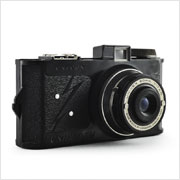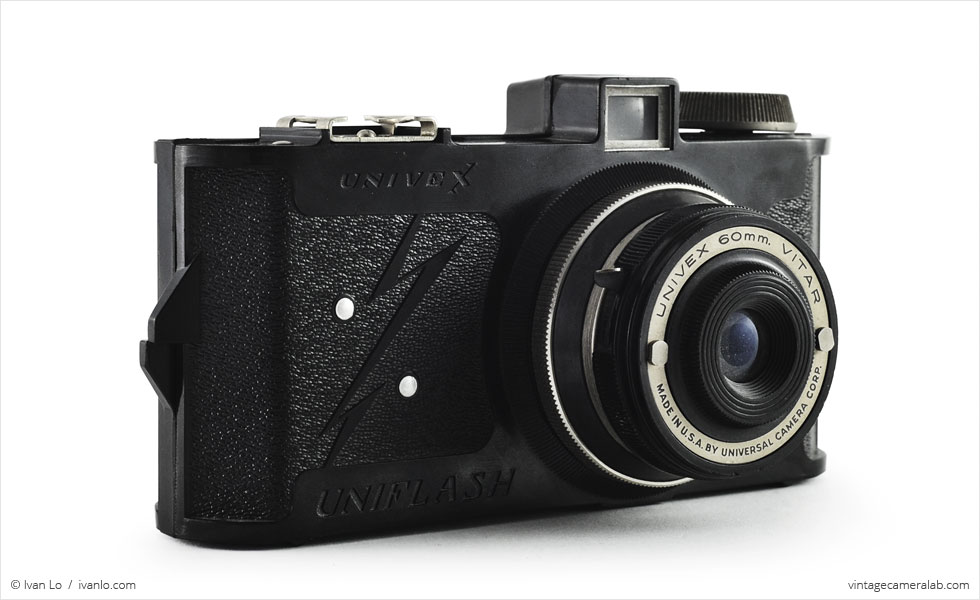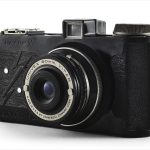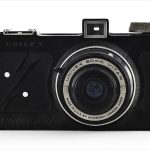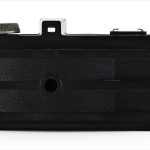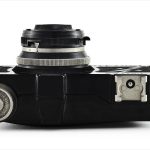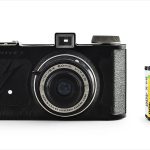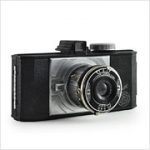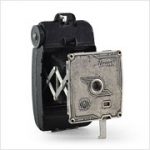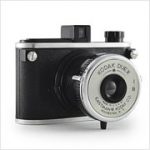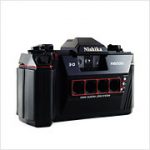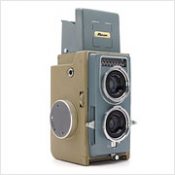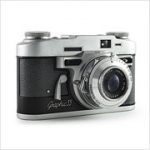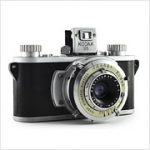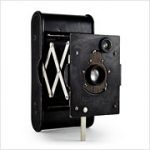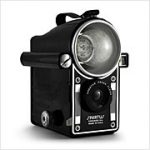Univex Uniflash Specifications
| Manufacturer: | Universal Camera Corp. |
| Origin: | USA |
| Made in: | New York City, NY, USA |
| Introduced: | 1941 |
| Type: | Viewfinder |
| Format: | No. 00 Universal Film |
| Dimensions: | 13.3 x 7.3 x 6.7 cm |
Univex Uniflash Overview
The Univex Uniflash is a simple viewfinder camera made of Bakelite, an early plastic, which was introduced in 1941 by the Universal Camera Corporation. The Uniflash is named after its hot shoe, probably to call attention to the fact that it was the first inexpensive plastic camera in Universal’s lineup to feature one. Like other early Univex cameras such as the Model AF-4, the Uniflash used Universal’s proprietary No. 00 film as part of the company’s brilliant “razor and blades” marketing strategy.
Like many cameras of this type and era, the Uniflash is pretty bare-bones when it comes to controls. The 60mm Vitar lens has a fixed aperture of approximately f/11 and is mated to a simple shutter with just two settings: I (for “instant,” roughly 1/60 second) and B for “Bulb” (it stays open for as long as the shutter button is held down). The all-important hot shoe can be found on the user’s right-hand side of the top plate and is powered by an internal battery compartment that can house two standard AAs. Opposite the hot shoe is a film advance knob and a primitive optical viewfinder is in the middle. A simple friction latch on the user’s right-hand side pops off the entire back of the camera which has a red window (missing on mine) to show the current frame number printed on the film’s paper backing. A standard tripod socket is on the bottom.
While the Uniflash itself isn’t especially interesting or theatrical, Universal’s marketing team evidently had a lot of fun writing copy for the camera’s packaging. A bizarre manifesto appears on one side of the box, trying its hardest to imbue this plastic camera with enough film noir-esque drama to rival any brooding crime film that 1940s Hollywood could produce:
I am the servant of light; the master of darkness. My magic eye penetrates the black curtain of night to reveal her mysteries. I render imperishable the pages of the book of memory. I keep forever green the happy hours of childhood. I preserve indelibly the vision of friends and loved ones, the vistas of far distant lands, the splendor of sea and sky. Born in a flash of light, my scroll becomes everlasting. I AM UNIFLASH.
Find your very own Univex Uniflash on eBay.
McKeown, James M. and Joan C. McKeown’s Price Guide to Antique and Classic Cameras, 2001-2002. (Grantsburg, WI, USA: Centennial Photo Service, 2001), p 647.
